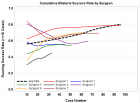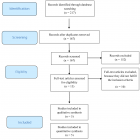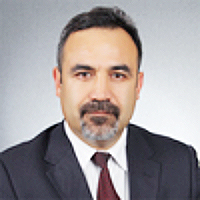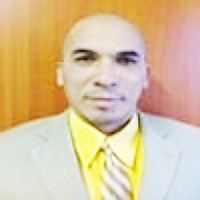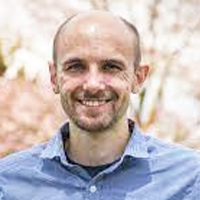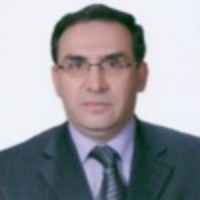Abstract
Research Article
Isolation and Influence of Carbon Source on the Production of Extracellular Polymeric Substance by Bacteria for the Bioremediation of Heavy Metals in Santo Amaro City
Leila Thaise Santana de Oliveira Santos*, Kayque Frota Sampaio, Elisa Esposito, Elinalva Maciel Paulo, Aristóteles Góes-Neto, Amanda da Silva Souza and Taise Bomfim de Jesus
Published: 09 February, 2024 | Volume 8 - Issue 1 | Pages: 012-017
The city of Santo Amaro (Bahia, Brazil) gained visibility among the scientific community due to the contamination of the Subaé River by lead and cadmium from the PLUMBUM Mineração e Metalurgia Ltda industry, on the banks of the river in 1956, which produced lead ingots The present work aimed to investigate the adsorption capacity of heavy metals (Pb and Cd) of EPS produced by bacterial species from the Subaé River, for possible future application of these biopolymers in bioremediation processes in areas impacted by the aforementioned heavy metals. Subaé river water was collected for physical-chemical analysis and bacterial isolation. It was verified that all isolated bacteria produced an expressive amount of Exopolysaccharide (EPS). Thus, the optimization of this production in different sugars (sucrose, glucose, and mannitol) and in three different pHs: 5.5; 6.5, and 7.5. All bacteria produced EPS in large quantities and the best sugar was sucrose at pH 7.5. In order to use the EPS for the bioremediation area, the adsorption test of lead and cadmium was carried out by the isolated EPS. 0.5 g of the EPS was dissolved in 50 ml of deionized water, then the solutions of metals, lead acetate, and cadmium sulfate (procedure performed separately) were incubated at 28 °C for 16 h after that period, and were centrifuged. Samples were filtered to separate the insoluble EPS and the filtrates obtained were used in the quantification of the metals by atomic absorption (FAAS- Flame Atomic Absorption Spectrometry). Bacillus spp., Bacillus cereus, Staphylococcus spp., and Serratiamarcescens, all showed tolerance to the tested metals, due to the efficiency in the adsorption capacity of the EPS, and it was possible to distinguish seven genera, Klebsiella pneumonia, Pseudomonas aeruginosa, Lysinibacillus spp. to be used in the bioremediation of environments contaminated with heavy metals.
Read Full Article HTML DOI: 10.29328/journal.acee.1001060 Cite this Article Read Full Article PDF
Keywords:
Bioremediation; Heavy metals; Exopolysaccharide; Adsorption; Bacteria; Subaé river
References
- Andrade MF, Moraes LRS. Lead contamination in santo amaro defies decades of research and delayed reaction on the part of the public authorities. Environment and Society. 2013; 16(2):63-80.
- Souza SL, Carvalho FJPC, Reissmann CB, Gonçalves CG, Krenzynsky M, Staley J. Microbial Diversity and the Biosphere. 1998.
- Stewart PS, Franklin MJ. Physiological heterogeneity in biofilms. Nat Rev Microbiol. 2008 Mar;6(3):199-210. doi: 10.1038/nrmicro1838. PMID: 18264116.
- Abee T, Kovács AT, Kuipers OP, van der Veen S. Biofilm formation and dispersal in Gram-positive bacteria. Curr Opin Biotechnol. 2011 Apr;22(2):172-9. doi: 10.1016/j.copbio.2010.10.016. Epub 2010 Nov 23. PMID: 21109420.
- De Vuyst L, Degeest B. Heteropolysaccharides from lactic acid bacteria. FEMS Microbiol Rev. 1999 Apr;23(2):153-77. doi: 10.1111/j.1574-6976.1999.tb00395.x. PMID: 10234843.
- Looijesteijn PJ, Trapet L, de Vries E, Abee T, Hugenholtz J. Physiological function of exopolysaccharides produced by Lactococcus lactis. Int J Food Microbiol. 2001 Feb 28;64(1-2):71-80. doi: 10.1016/s0168-1605(00)00437-2. PMID: 11252513.
- APHA – AWWA- WPCF. Standard methods for the examination of water and wastewater. 19th Washington D.C. American Public Health Association. 1995; 953.
- Guimarães DP, Costa F, Rodrigues MI., Maugeri F. Optimization of dextran synthesis and acid hydrolysis by surface response analysis. Brazilian Journal of Chemical Engineering. 1999; 16:129-139.
- Paulo EM. Production of exopolysaccharides (EPS) by lactic acid bacteria occurs microencapsulation of Lactobacillus acidophilus La-5 by the Spray-drying process. 2010. 212f. Thesis (Doctorate in Biotechnology) - State University of Feira de Santana, Feira de Santana, 2010.
- Paulo EM, Vasconcelos MP, Oliveira IS, Michelle H, Affe DJ, Nascimento R, Assis SA. An alternative method for screening lactic acid bacteria for the production of exopolysaccharides with rapid confirmation. Food Science and Technology. 2012; 32(4):710–14.
- Ruschel CFC, Huang, CT, Samios D, Ferrão MF. Exploratory analysis applied to attenuated total reflection spectra in Fourier transform infrared (ATR-FTIR) of biodiesel/diesel blends. New Chemistry. 2014; 37(5).
- Seviour RJ, Stasinopoulos SJ, Auer DPF, Gibbs PA. Production of pullulan and other exopolysaccharides by filamentous fungi. Critical Reviews. Biotechnology, Boca Raton. 1992; 12:279-98.
- Schuster R, Wenzig E, Mersmann A. Production of the fungal exopolysaccharide pullulan by batch-wise and continuous fermentation. Applied and Microbiology and Biotechnology. 1993; 39: 155-8.
- Fariña JI, Siñeriz F, Molina OE, Perotti NI. High scleroglucan production by Sclerotiumrolfsii: Influence of medium composition. Biotechnology Letters, Dordrecht. 1998; 20(9):825-31.
- Bae JT, Sinha J, Park JP, Yun JW. Optimization of submerged culture conditions for exo-biopolymer production by Paecilomyces japonica. Journal of Microbiology and Biotechnology, Kangnam-Ku. 2000; 10:482-7.
- Dekker RF, Barbosa AM. The effects of aeration and veratryl alcohol on the production of two laccases by the ascomycete Botryosphaeria sp. Enzyme Microb Technol. 2001 Jan 2;28(1):81-88. doi: 10.1016/s0141-0229(00)00274-x. PMID: 11118601.
- Pigatto MM. Exopolysaccharide production by the ligninolytic fungus Botryosphaeria sp. Monograph - State University of Londrina, Londrina. 2002; 53.
- Barbosa AM, Cunha PDT, Pigatto MM, Silva MLC. Production and applications of fungal exopolysaccharides. Semina: Exact and Technological Sciences, Londrina. 2004; 25(1):29-42.
- Guimarães LB, Santos VZR, Covizzi LG, Garcia-Cruz CH. Influence of different nitrogen sources on growth and EPS production by Diaporthe phaseolorum var. caulivora. Brazilian Journal Food Technology, VII BMCFB, June 2009.
- Miled K, Sab K, Le Roy R. Particle size effect on EPS lightweight concrete compressive strength: experimental investigation and modeling, Mechanics of Materials. 2007; 39.
- Wei W, Wang Q, Li A, Yang J, Ma F, Pi S. Biosorption of Pb (II) from aqueous solution by extracellular polymeric substances extracted from Klebsiella sp. J1: Adsorption behavior and mechanism assessment. Scientific Reports. 2016; 6(31575):1-10.
- Volesky B. Biosorption process simulation tools. Hydrometallurgy. 2003; 71:179-190.
- Girardi F, Hackbarth FV, Souza SMAGU, Souza AAU, Boaventura RAR, Vilar VJP. Marine macroalgae Pelvetia canaliculata (Linnaeus) as natural cation exchanger for metal ions separation: A case study on copper and zinc ions removal. Chem Eng J. 2014; 247:320-29.
- Hackbarth FV, Girardi F, Souza SMAGU, Souza AAU, Boaventura RAR, Vilar VJP. Marine macroalgae Pelvetia canaliculata (Phaeophyceae) as a natural cation exchanger for cadmium and lead ions separation in aqueous solutions. Chem Eng J. 2014; 242:294- 305.
Figures:
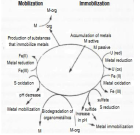
Figure 1

Figure 2
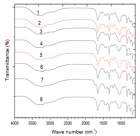
Figure 3
Similar Articles
-
Removal of Chromium from Aqueous Solution by Thermally Treated Mgal Layered Double HydroxideDashkhuu Khasbaatar*,Enkhtur Otgonjargal,Byambasuren Nyamsuren,Enkhtuul Surenjav,Gunchin Burmaa,Jadambaa Temuujin. Removal of Chromium from Aqueous Solution by Thermally Treated Mgal Layered Double Hydroxide. . 2017 doi: 10.29328/journal.acee.1001001; 1: 001-008
-
Rapid Microbial Growth in Reusable Drinking Water BottlesQishan Liu*,Hongjun Liu. Rapid Microbial Growth in Reusable Drinking Water Bottles. . 2017 doi: 10.29328/journal.acee.1001007; 1: 055-062
-
Effect of cement solidification on strength and leaching properties of Heavy Metals Contaminated SoilSyed Taseer Abbas Jaffar*,Sajjad Yousefi Oderji,Si-an Zhang,Long-zhu Chen. Effect of cement solidification on strength and leaching properties of Heavy Metals Contaminated Soil. . 2018 doi: 10.29328/journal.acee.1001011; 2: 016-027
-
Behavior evaluation of freundlich and langmuir isotherms in cadmium preconcentration using solid phase extraction method for linear and nonlinear numerical computational patternsBenyamin Chahkandi,Mohammad Gheibi*,Amir Takhtravan. Behavior evaluation of freundlich and langmuir isotherms in cadmium preconcentration using solid phase extraction method for linear and nonlinear numerical computational patterns. . 2021 doi: 10.29328/journal.acee.1001029; 5: 007-010
-
Nano-silica from kaolinitic clay used as adsorbent for anionic and cationic dyes removal: linear and non-linear regression isotherms and kinetics studiesGustave Tchanang,Chantale Njiomou Djangang*,Charles Fon Abi,Danie Laure Mbella Moukouri,Guillonnel Trésor Nyadjou Djabo,Jean Marie Kepdieu,Philippe Blanchart. Nano-silica from kaolinitic clay used as adsorbent for anionic and cationic dyes removal: linear and non-linear regression isotherms and kinetics studies. . 2022 doi: 10.29328/journal.acee.1001034; 6: 008-018
-
Microbial Conversion and Utilization of CO2Ge-Ge Wang, Yuan Zhang, Xiao-Yan Wang*, Gen-Lin Zhang. Microbial Conversion and Utilization of CO2. . 2023 doi: 10.29328/journal.acee.1001055; 7: 045-060
-
Isolation and Influence of Carbon Source on the Production of Extracellular Polymeric Substance by Bacteria for the Bioremediation of Heavy Metals in Santo Amaro CityLeila Thaise Santana de Oliveira Santos*, Kayque Frota Sampaio, Elisa Esposito, Elinalva Maciel Paulo, Aristóteles Góes-Neto, Amanda da Silva Souza, Taise Bomfim de Jesus. Isolation and Influence of Carbon Source on the Production of Extracellular Polymeric Substance by Bacteria for the Bioremediation of Heavy Metals in Santo Amaro City. . 2024 doi: 10.29328/journal.acee.1001060; 8: 012-017
Recently Viewed
-
Treatment Outcome in Patients with Myofascial Orofacial Pain: A Randomized Clinical TrialAnders Wänman*, Susanna Marklund, Negin Yekkalam. Treatment Outcome in Patients with Myofascial Orofacial Pain: A Randomized Clinical Trial. J Oral Health Craniofac Sci. 2024: doi: 10.29328/journal.johcs.1001046; 9: 001-008
-
Hygiene and Care Protocols for Implant-supported Dental Prostheses in Patients with DiabetesHakob Khachatryan, Emma Boshnaghyan, Sevak Papoyan, Gagik Hakobyan*. Hygiene and Care Protocols for Implant-supported Dental Prostheses in Patients with Diabetes. J Oral Health Craniofac Sci. 2024: doi: 10.29328/journal.johcs.1001047; 9: 009-014
-
Advancing Oral Health and Craniofacial Science through Microchip ImplantsShekufeh Shafeie*. Advancing Oral Health and Craniofacial Science through Microchip Implants. J Oral Health Craniofac Sci. 2024: doi: 10.29328/journal.johcs.1001048; 9: 015-018
-
Texture Analysis of Hard Tissue Changes after Sinus Lift Surgery with Allograft and XenograftMohammad Azimzadeh, Farzad Esmaeili, Narges Bayat, Kasra Rahimipour, Amir Ebrahimpour Tolouei*. Texture Analysis of Hard Tissue Changes after Sinus Lift Surgery with Allograft and Xenograft. J Oral Health Craniofac Sci. 2024: doi: 10.29328/journal.johcs.1001049; 9: 019-022
-
Awareness and Knowledge of Specialists/Trainers and General Dental Practitioners about Medical-Related Osteonecrosis of the JawsAbdulhamit Taha Koca,Mustafa Bayhan,Yunus Ayberk Demir,Ayse Zeynep Zengin*. Awareness and Knowledge of Specialists/Trainers and General Dental Practitioners about Medical-Related Osteonecrosis of the Jaws. J Oral Health Craniofac Sci. 2024: doi: 10.29328/journal.johcs.1001050; 9: 023-031
Most Viewed
-
Evaluation of Biostimulants Based on Recovered Protein Hydrolysates from Animal By-products as Plant Growth EnhancersH Pérez-Aguilar*, M Lacruz-Asaro, F Arán-Ais. Evaluation of Biostimulants Based on Recovered Protein Hydrolysates from Animal By-products as Plant Growth Enhancers. J Plant Sci Phytopathol. 2023 doi: 10.29328/journal.jpsp.1001104; 7: 042-047
-
Sinonasal Myxoma Extending into the Orbit in a 4-Year Old: A Case PresentationJulian A Purrinos*, Ramzi Younis. Sinonasal Myxoma Extending into the Orbit in a 4-Year Old: A Case Presentation. Arch Case Rep. 2024 doi: 10.29328/journal.acr.1001099; 8: 075-077
-
Feasibility study of magnetic sensing for detecting single-neuron action potentialsDenis Tonini,Kai Wu,Renata Saha,Jian-Ping Wang*. Feasibility study of magnetic sensing for detecting single-neuron action potentials. Ann Biomed Sci Eng. 2022 doi: 10.29328/journal.abse.1001018; 6: 019-029
-
Pediatric Dysgerminoma: Unveiling a Rare Ovarian TumorFaten Limaiem*, Khalil Saffar, Ahmed Halouani. Pediatric Dysgerminoma: Unveiling a Rare Ovarian Tumor. Arch Case Rep. 2024 doi: 10.29328/journal.acr.1001087; 8: 010-013
-
Physical activity can change the physiological and psychological circumstances during COVID-19 pandemic: A narrative reviewKhashayar Maroufi*. Physical activity can change the physiological and psychological circumstances during COVID-19 pandemic: A narrative review. J Sports Med Ther. 2021 doi: 10.29328/journal.jsmt.1001051; 6: 001-007

HSPI: We're glad you're here. Please click "create a new Query" if you are a new visitor to our website and need further information from us.
If you are already a member of our network and need to keep track of any developments regarding a question you have already submitted, click "take me to my Query."








